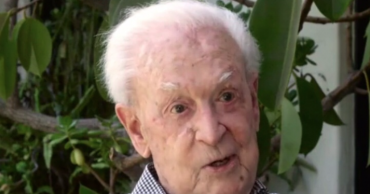
People often call the modern era of television the “Second Golden Age of TV.” After the revolutions of early television (the first “Golden Age”), the medium slumped for a few decades with few shows that would eventually be called “classics.” Within the past decade or so, however, television has once again returned to a place of prominence, often being compared favorably to the quality of the most respected films of the day. Because of ratings decline, due in part from both the overload of scripted and unscripted television and the fundamental change in viewership patterns, some of the most critically acclaimed and beloved shows of this “Golden Age” are prematurely cancelled because of failure to find a substantial audience. Some shows, such as Breaking Bad or Mad Men, are given the time to grow and develop, but this is largely due to the different landscapes of cable television and broadcast television. It is somewhat rare for a broadcast series with a small (if dedicated) audience to be given time to grow, no matter how acclaimed it may be. Luckily, though, NBC has allowed its incredible (and incredibly low-rated) series Hannibal to survive through an upcoming third season (debuting in June 2015), and now is, without a doubt, the time for a wider audience to realize that Hannibal is the best show currently airing on TV.
Since its premiere in April 2013, Hannibal has been a modern-day retelling/reimagining of Thomas Harris’s popular series of books about psychiatrist-turned-serial killer Dr. Hannibal Lecter. Through four novels (Red Dragon, The Silence of the Lambs, Hannibal, and Hannibal Rising), audiences were introduced to one of the most terrifyingly intriguing characters to ever enter the realm of fiction. Hannibal the series was developed by Bryan Fuller, creator of cult favorites such as Pushing Daisies and Wonderfalls, who pitched the series as a seven-season (now reworked to six-season) epic that would take the established characters from the franchise and tell a unique story designed to captivate audiences both old and new.
There are many reasons why Hannibal is the best show currently airing on television, but these reasons can be categorized by four distinct areas: story, cast, visuals, and Fannibals.
[Spoilers for Seasons 1 and 2 of Hannibal to follow.]
Story
“I feel like I’ve dragged you into my world.” – Will Graham
The premise for the television adaptation of Hannibal was, in essence, to take the established story and reimagine it in a unique way while also filling in backstories and characters that may not have been considered necessary information in other mediums. Initially, Fuller’s plan for the show was for the first three seasons to give a backstory for the characters of Hannibal Lecter and Will Graham, the fourth season to adapt the story of Red Dragon, the fifth to adapt The Silence of the Lambs, the sixth to adapt Hannibal (the novel), and the seventh to wrap up the story after the debatable cliffhanger that is the ending of the novel Hannibal. For the backbone of the first three seasons, Fuller looked to a few brief pages from the novel Red Dragon in which Thomas Harris details the relationship between Hannibal and Will. These few pages were then fleshed out and expanded over the course of two and a half seasons of Hannibal, as the story was shortened slightly for pacing from the initial seven season plan. This relationship building has led to some of the most intriguing character development that has ever appeared on television, and it rivals the development of any characters in any existing medium.

Because of this untapped area of time from the novels or movies, the series Hannibal has also allowed for smaller franchise characters to take their time in the spotlight, as well as allowing for the reworking of established backstories of more prominent characters. Characters such as Dr. Frederick Chilton and Alana Bloom (gender-swapped from the Alan Bloom of the canon) have been given multiple seasons to develop and shine, and well-established characters such as Mason and Margot Verger have been reworked to appear in the story much earlier than previously established and in much different and, arguably, more interesting ways than before. The time given to the television series has also allowed for the creation of new characters, such as Dr. Abel Gideon and Miriam Lass, that have become just as well-loved as characters created by Thomas Harris. Along with fleshing out the main characters, the television medium has allowed for unexpected scenarios, such as Will Graham being imprisoned for the first half of the second season, that have led to much more character development than could have been anticipated when the series was initially announced.
Cast
“Here we are; a bunch of psychopaths helping each other out.” – Freddie Lounds
Until very recently, television, particularly broadcast television, has been criticized for a lack of diversity. When Bryan Fuller pitched the idea of Hannibal, he pitched it with the idea of a major emphasis on a cast that did not consist entirely of white male actors. To this effect, many established characters were gender-swapped or racebent in order to increase diversity. FBI agent Jack Crawford, previously portrayed as a middle-aged white man, is played by Lawrence Fishburne in the television series. The characters of Freddy Lounds and Alan Bloom, men in the novels, are gender-swapped to Freddie Lounds and Alana Bloom, respectively, in the series. Main cast member Hettienne Park, an Asian American, portrays Beverly Katz, further adding to the diversity. Other prominent female characters in the series include Margot Verger and Miriam Lass. Aside from diversity, the strength of the cast of Hannibal is one of the most impressive things that the show has had going for it from the beginning. Mads Mikkelsen as Hannibal Lecter and Hugh Dancy as Will Graham are incredibly talented in their own right, but the main cast is further strengthened by gifted actors and actresses such as Caroline Dhavernas, Scott Thompson, Aaron Abrams, and the previously mentioned Laurence Fishburne, and Season 3 will feature the promotions of frequent guest performers Gillian Anderson and Raúl Esparza. In addition to the main credited cast, Hannibal has always benefited from a strong supporting and guest cast, including Eddie Izzard as Dr. Abel Gideon, Kacey Rohl as Abigail Hobbs, Anna Chlumsky as Miriam Lass, Michael Pitt (in Season 2) as Mason Verger, Lara Jean Chorostecki as Freddie Lounds, and many, many more. The strength of the cast has led to much more dynamic performances of the material than would be possible otherwise.

Visuals
“I don’t want to kill you anymore, Dr. Lecter. I finally find you interesting.” – Will Graham
One of the aspects of Hannibal that is frequently commented on are the visuals of the show. Every single frame of Hannibal features an incredible amount of detail, be it the set design, the color palette, the staging, or the food (thanks primarily to artist Janice Poon and chef José Andrés). Much of the success in the visual department is due to the caliber of director that the show attracts, such as David Slade (30 Days of Night), Michael Rymer (Battlestar Galactica), Guillermo Navarro (frequent collaborator of Guillermo del Toro), Vincenzo Natali (Cube, Splice), and Neil Marshall (The Descent). The attention to detail bleeds into every aspect of the show, including Hannibal‘s imaginative death sequences. Hannibal also features numerous visual homages to both classic horror movies and the Hannibal film franchise.
Fannibals
“That may require me to be social.” – Will Graham
The lifeblood of Hannibal and one of the major reasons that it has survived for three seasons is the incredible fanbase, lovingly known as the Fannibals. Fannibals promote the show in every single way possible, particularly through the use of social media. The cast and crew of Hannibal support the Fannibals as much as they can, and Bryan Fuller uses Twitter in an effort of being as transparent as possible about the production process behind the show. Live-tweeting by a large number of the cast and crew is a frequent occurrence during new episodes of the show, and they have also been known to participate in binge marathons taking place online or even in other countries.
It would be easy to go on and on forever about the things that make Hannibal great, including the sound design and the callbacks to the popular film series, but it is equally easy to see why Hannibal is, arguably, the best show currently airing on television, and it is my hope, along with the rest of the small-but-loyal audience, that Hannibal is given the opportunity, whether on NBC or elsewhere, to fully complete the story that it wants to tell.
Season 3 of Hannibal premieres on Thursday, June 4, at 10 p.m. on NBC. The first two seasons are streaming exclusively on Amazon Instant Video.
[Photos via NBC]
 Follow Us
Follow Us






This show is a work of art. I can’t believe it took me so long to start watching it. Definitely looking forward to season three!